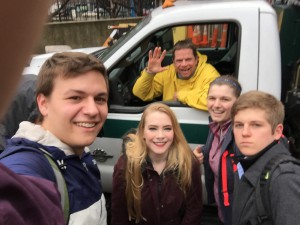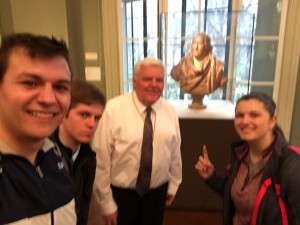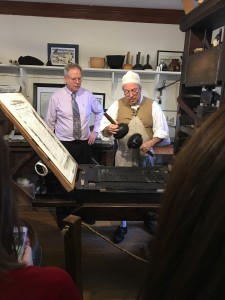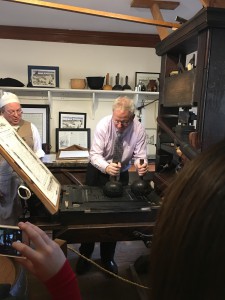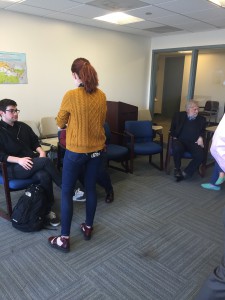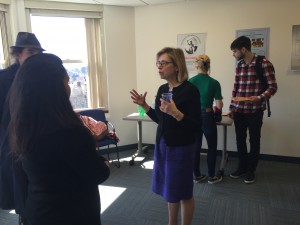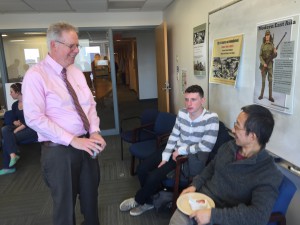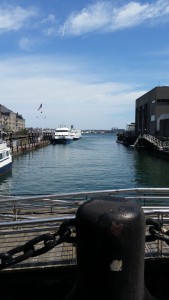The Abiel Smith School, funded by philanthropist Abiel Smith, was the first public school for freed black children in the United States. It was constructed directly next door to the African Meeting house, creative a community for freed African Americans in Boston. The Abiel Smith School is a National Historic Landmark, and also part of the Boston Black Heritage Trail.
Louisburg square was named after the Battle of Louisburg, where a force of colonial militiamen, with the help of the British fleet and commanded by William Pepperell, a native of Kittery, captured the capital of the French colonial town of Louisburg in modern day Nova Scotia during King George’s War. The square has a statue of Columbus at one end and of Aristides the Just at another.
John Kerry owns a town house in the Beacon Hill neighborhood of Louisburg Square. He served in Vietnam, being awarded the Silver Star medal, the Bronze Star medal, and three purple hearts. He served on the United States Senate from 1984-2008. He ran for president in 2004 and lost to incumbent George H.W. Bush. In 2013, he was appointed to Secretary of State under President Barack Obama.
Horace Mann was a member of the Massachusetts State legislator and served on the Massachusetts State Board of Education. His life’s work was universal public education system and he began building schools on Massachusetts. He argued that in order to train unruly children to become respectable and responsible citizens, they must be sent to school and receive an education. Most states ended up adopting his system and soon, his idea of education for all spread across the nation.
Boston Common was established in 1634 and originally served the purpose of allowing farmers to bring their cattle to graze. However, the number of cows was limited to seventy, as the cattle were overgrazing American’s oldest city park. Mayor Harrison Gray Otis banned farmers from allowing their cattle to graze on the Common in 1830. Before the American Revolution, British troops camped on the Common, from which they marched to Lexington and Concord in 1775.
The Central Burying Ground was established in 1756 and has notable burials of Gilbert Stuart and William Billings. Gilbert Stuart was an artist who painted both George and Martha Washington’s portraits. The incomplete portrait of George Washington is used on US one dollar bill for over a century and various postage stamps from the ninetieth and twentieth century.
The statue of Benjamin Franklin at Old City Hall has four plaques representing different eras of his life. Two of these plaques illustrate Franklin’s political aspect of his life, including his involvement in the creating and signing of the Declaration of Independence, as well as the Treaty of Paris.
The Boston Athenaeum was founded in 1807 as an independent library, where members must pay a subscription to use its facilities and resources. It houses over one hundred thousand rare books, and an art collection of 100,000 paintings, sculptures, prints, drawings, photographs, and decorative arts. One of its most priceless artifacts is a bust of Benjamin Franklin, sculpted by Jean-Antoine Houdon, a famous French sculpture who created sculptures of Benjamin Franklin, Voltaire, and Napoleon Bonaparte.
By:
David Viviano
Matt Borges
Ian Ryan
Kaylee Lampert
Katie Flores
Mikhail Bryan
Alex Marcus
